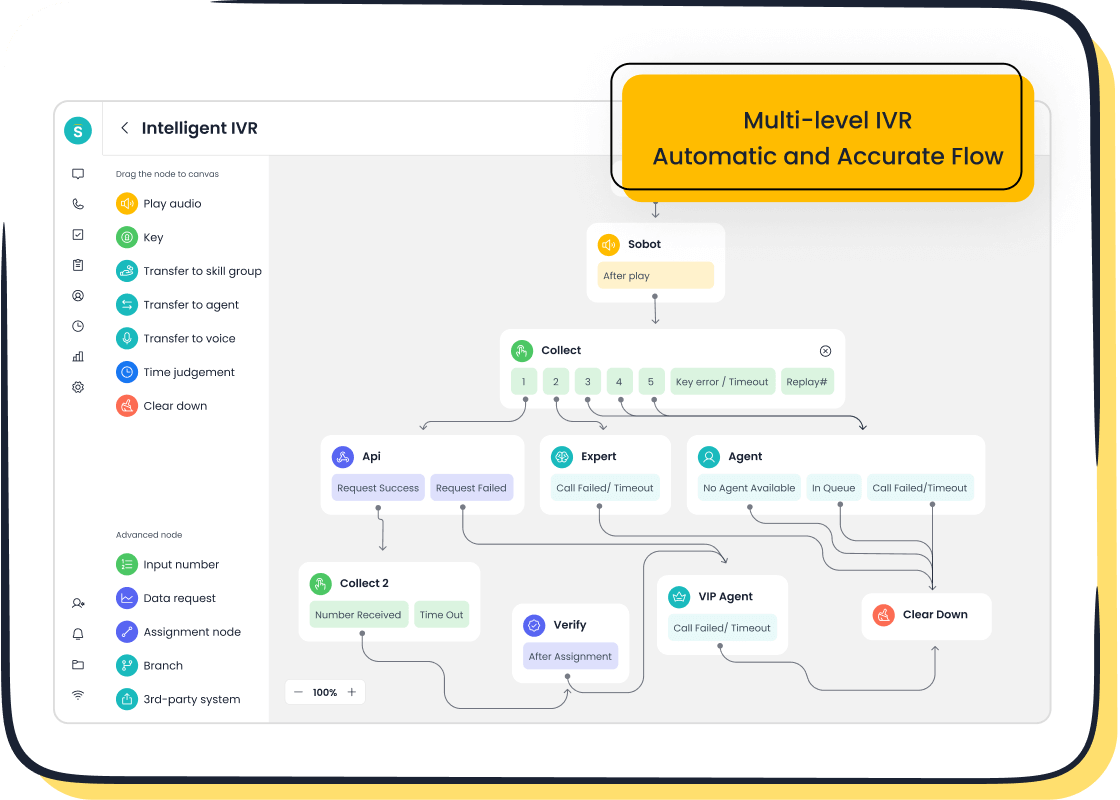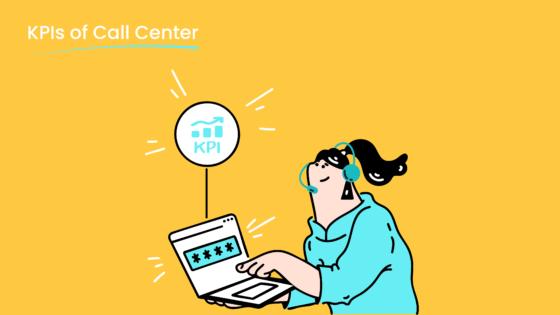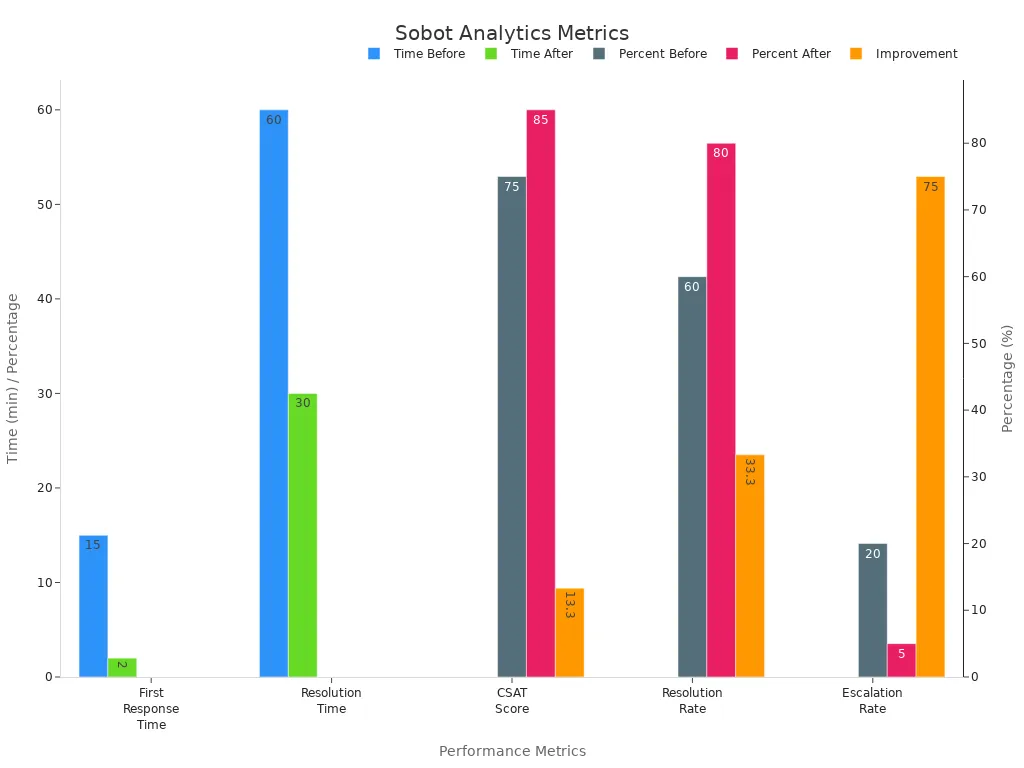A Step-by-Step Guide to Writing CSAT Questions


Customer satisfaction surveys play a vital role in elevating customer experience. CSAT questions, which measure satisfaction levels, are central to these surveys. They help you gauge customer service quality and track customer satisfaction metrics over time. For instance, a CSAT survey might ask customers to rate their experience on a scale of 1 to 5. A score of 5 reflects high satisfaction, while 1 signals dissatisfaction. Tools like Sobot's Voice/Call Center streamline collecting customer feedback by automating workflows and analyzing customer satisfaction scores. This ensures meaningful feedback that drives actionable improvements in customer satisfaction.
Key Principles for Writing Effective CSAT Questions
Clarity and Simplicity in Survey Questions
Clear and simple survey questions are essential for collecting accurate customer feedback. When questions are easy to understand, respondents can provide thoughtful answers without confusion. Research highlights that specific and straightforward wording improves response quality. For example, a 2019 study found that forced-choice questions yield more reliable data, especially for sensitive topics.
Avoid double-barreled questions, which combine two inquiries into one. For instance, instead of asking, "How satisfied are you with our product and service quality?" separate these into two distinct questions. This ensures clarity and avoids ambiguity.
To make your satisfaction survey questions more effective:
- Use simple language that avoids industry jargon.
- Ensure response options are exhaustive and mutually exclusive.
- Pretest your survey questions to identify potential confusion.
By simplifying complex questions, you create a user-friendly experience that encourages completion and yields high-quality data.
Avoiding Bias and Leading Language
Bias in survey questions can distort customer feedback and compromise the reliability of your data. Neutral wording is crucial for collecting genuine responses. For example, instead of asking, "How amazing was your experience with our service?" opt for "How would you rate your experience with our service?"
Studies show that avoiding bias improves data reliability. Strategies include:
| Strategy | Description |
|---|---|
| Response Scale | Use scales like "Definitely will not" to "Definitely will" to reduce bias. |
| Clear Language | Ensure questions are precise and neutral to avoid ambiguity. |
| Split Questions | Break complex inquiries into simpler ones for better accuracy. |
When surveying internationally, consider cultural norms. Compare open-ended feedback with initial ratings to identify potential biases. These practices ensure your CSAT survey captures authentic customer experiences.
Focusing on Actionable Insights
CSAT questions should provide actionable feedback that drives meaningful improvements. For instance, asking, "What could we do to improve your experience?" helps identify specific areas for enhancement. Schuh, a retail company, leveraged actionable insights by introducing next-day delivery and video live chat, resulting in increased customer satisfaction and spending.
Actionable insights offer several benefits:
- Retain more customers by addressing satisfaction drivers.
- Increase customer lifetime value, as satisfied customers tend to spend more.
- Identify areas for improvement, such as processes or features that need refinement.
By focusing on actionable insights, you can transform feedback collection into a powerful tool for improving service quality and customer experience.
Aligning Questions with Customer Satisfaction Goals
Crafting CSAT questions that align with your customer satisfaction goals ensures you gather feedback that directly supports your business objectives. When your questions reflect what you aim to achieve, the insights become more actionable and impactful.
Why Alignment Matters
Every business has unique goals for improving customer satisfaction. Some focus on reducing response times, while others aim to enhance product quality or streamline the purchasing process. Misaligned questions can lead to irrelevant data, wasting both your time and your customers' effort. For example, if your goal is to improve post-purchase support, asking about website navigation won't provide useful insights.
Tip: Start by identifying your primary customer satisfaction goals. Then, tailor your questions to address those specific areas.
Steps to Align CSAT Questions with Goals
-
Define Your Objectives Clearly
Begin by outlining what you want to achieve. Are you looking to improve customer support efficiency? Or do you want to measure satisfaction with a new product feature? Clear objectives act as a roadmap for designing effective questions. -
Focus on Key Touchpoints
Align your questions with critical moments in the customer journey. For instance:- After a purchase, ask, "How satisfied are you with the checkout process?"
- Following a support interaction, inquire, "Did our team resolve your issue to your satisfaction?"
-
Use Specific and Measurable Language
Vague questions lead to vague answers. Instead of asking, "Are you happy with our service?" try, "On a scale of 1 to 5, how satisfied are you with the speed of our service?" This approach provides measurable data that aligns with your goals. -
Leverage Tools for Customization

Tools like Sobot's Voice/Call Center allow you to customize surveys based on customer interactions. For example, you can create targeted questions for customers who recently contacted support. This ensures your surveys remain relevant and goal-focused.
Example: Aligning Questions with a Goal
Imagine your goal is to improve first-contact resolution rates in customer support. A well-aligned question might be:
"Was your issue resolved during your first interaction with our support team?"
This question directly ties to your objective, helping you identify areas for improvement.
Benefits of Alignment
- Actionable Insights: Aligned questions provide data that directly informs your strategies.
- Improved Response Rates: Customers are more likely to engage with surveys that feel relevant to their experience.
- Efficient Resource Allocation: Focused questions help you prioritize efforts where they matter most.
By aligning your CSAT questions with your customer satisfaction goals, you ensure that every piece of feedback contributes to meaningful improvements.
Exploring Different Types of CSAT Questions

Rating Scale Questions for Quantitative Feedback
Rating scale questions are a cornerstone of effective survey questions. They allow you to quantify customer feedback, making it easier to identify trends and measure satisfaction. For example, asking, "On a scale of 1 to 10, how satisfied are you with our service?" provides clear data points for analysis.
These questions offer several advantages:
- They simplify data collection and analysis.
- They convert abstract sentiments into measurable insights.
- They reduce survey bias and improve response rates.
Studies show that rating scales, such as the 1 to 10 format, effectively capture satisfaction levels. This approach helps you pinpoint strengths and weaknesses in your products or services. Tools like Sobot's Voice/Call Center can automate the collection and analysis of these responses, ensuring you gain actionable insights from your CSAT survey.
Multiple-Choice Questions for Specific Insights
Multiple-choice questions are ideal for gathering structured data. They help you understand specific aspects of the customer experience. For instance, you might ask, "What was the primary reason for contacting our support team?" and provide options like "Technical issue," "Billing inquiry," or "Product information."
These questions offer several benefits:
- They are easy to analyze and organize.
- They work well on mobile devices, boosting response rates.
- They allow you to collect demographic or behavioral data efficiently.
Combining multiple-choice questions with open-text responses can provide deeper insights. For example, after asking about a customer's primary concern, you could follow up with, "Please elaborate on your experience." This approach aligns with broader business objectives by offering both quantitative and qualitative feedback.
Open-Ended Questions for Qualitative Feedback
Open-ended questions encourage customers to share detailed feedback in their own words. These questions are invaluable for uncovering insights you might not anticipate. For example, asking, "What could we do to improve your experience?" invites customers to highlight specific pain points or suggestions.
Key benefits of open-ended questions include:
- They provide flexibility for customers to express themselves.
- They uncover new insights and validate existing theories.
- They help you understand complex issues from the customer's perspective.
Although these questions require more effort to analyze, they offer a richer understanding of customer experiences. Sobot's analytics tools can streamline this process by identifying trends and patterns in qualitative feedback, helping you turn insights into actionable improvements.
Choosing the Right Question Type for Your Needs
Selecting the right type of question for your CSAT survey ensures you gather meaningful feedback. Each question type serves a specific purpose, so understanding their strengths helps you make informed choices.
1. Identify Your Objective
Start by defining what you want to learn. Are you measuring overall satisfaction or pinpointing specific issues? For example, if you want to track satisfaction trends, rating scale questions work best. If you need detailed suggestions, open-ended questions provide richer insights.
2. Match the Question Type to the Feedback You Need
Different question types excel in different scenarios:
- Rating Scale Questions: Use these to quantify satisfaction levels. They are ideal for tracking changes over time.
- Multiple-Choice Questions: These help you categorize feedback. For instance, you can ask, "What was the main reason for your visit?"
- Open-Ended Questions: These uncover unique insights. They allow customers to share thoughts in their own words.
Tip: Combine question types for a balanced survey. For example, pair a rating scale question with an open-ended follow-up to understand the "why" behind the score.
3. Consider Your Audience
Think about your customers’ preferences. Short and simple questions work well for busy respondents. If your audience includes non-native speakers, avoid complex language. Tools like Sobot's Voice/Call Center can help you tailor surveys to different customer segments.
4. Test and Refine
Before launching your survey, test it with a small group. This helps you identify unclear questions or response options. Adjust based on their feedback to ensure your survey is easy to complete.
Choosing the right question type ensures your CSAT questions deliver actionable insights. By aligning your questions with your goals and audience, you create surveys that drive meaningful improvements.
Customizing CSAT Questions for Customer Touchpoints
Pre-Sale Interactions: Setting the Right Expectations
Pre-sale CSAT questions help you understand how well your business sets expectations for potential customers. These questions focus on the early stages of the customer journey, such as browsing your website or exploring product options. By customizing surveys for this touchpoint, you can identify areas where customers face challenges or confusion.
For example, you might ask, "How easy was it to find the information you needed?" or "Did the product descriptions meet your expectations?" These questions uncover barriers in decision-making and assess brand confidence. According to metrics, ease of finding information and clarity of product descriptions are critical for building trust.
| Metric | Description |
|---|---|
| Ease of finding information | Measures how easily customers locate the information they need. |
| Clarity of product descriptions | Assesses whether product details, demos, or FAQs meet expectations. |
| Barriers in decision-making | Identifies obstacles that hinder browsing or purchasing. |
| Brand confidence | Evaluates customers' trust in the brand based on provided information. |

Using tools like Sobot's Voice/Call Center, you can deploy contextual microsurveys during pre-sale interactions. These surveys capture real-time feedback, ensuring data relevance and reliability.
Post-Purchase Feedback: Measuring Satisfaction
Post-purchase CSAT questions allow you to evaluate how satisfied customers are after completing a transaction. These surveys focus on the delivery, product quality, and overall purchasing experience. For instance, you can ask, "How satisfied are you with the delivery speed?" or "Did the product meet your expectations?"
Statistics show that post-purchase feedback directly impacts customer loyalty. Existing customers have a 60% to 70% chance of repurchasing, compared to just 5% to 20% for new customers. Additionally, 80% of revenue comes from 20% of loyal customers, highlighting their importance.
| Evidence Type | Statistic |
|---|---|
| Higher Repurchase Probability | Existing customers have a 60% to 70% chance of repurchasing. |
| Increased Revenue Contribution | 80% of revenue comes from 20% of loyal customers. |
| Higher Lifetime Value | Loyal customers generate more revenue and have a longer lifespan. |
| Advocacy and Referrals | 92% of consumers trust recommendations from friends and family over advertising. |
| Reduced Marketing Costs | Retaining customers is five times cheaper than acquiring new ones. |
Sobot's analytics tools help you analyze post-purchase feedback to identify trends and areas for improvement. This ensures you can enhance the customer experience and foster loyalty.
Customer Support Experiences: Identifying Pain Points
Customer support CSAT questions focus on uncovering pain points during service interactions. These surveys help you understand whether your support team resolves issues effectively and meets customer expectations. For example, you can ask, "Was your issue resolved during your first interaction?" or "How satisfied are you with the support team's response time?"
Studies emphasize the importance of identifying pain points to improve service quality and customer loyalty. Real-time feedback collection is particularly effective for pinpointing issues.
| Key Point | Explanation |
|---|---|
| Importance of Identifying Pain Points | Identifying pain points is essential for service improvement and loyalty. |
| Role of Customer Surveys | Surveys collect valuable information about service issues. |
| Real-time Feedback Collection | Capturing feedback immediately after interactions helps identify pain points. |
Sobot's Voice/Call Center offers features like call tracking and smart routing, enabling you to gather unified feedback across channels. This holistic approach ensures you address customer concerns effectively, improving satisfaction and retention.
Leveraging Sobot's Voice/Call Center for Tailored Surveys
Tailoring your CSAT surveys to specific customer interactions ensures you gather feedback that truly reflects their experiences. Sobot's Voice/Call Center provides the tools you need to create customized surveys that align with your business goals and customer touchpoints.
How Sobot Enhances Survey Customization
Sobot's intelligent IVR (Interactive Voice Response) system allows you to design surveys that adapt to customer interactions. For example, after a support call, you can ask, "How satisfied are you with the resolution provided?" This ensures the survey remains relevant to the customer's recent experience. The drag-and-drop interface makes it easy to build and deploy these surveys in real time.
Tip: Use Sobot's smart call routing to segment customers based on their interaction history. This helps you target specific groups with tailored questions, improving the quality of your feedback.
Benefits of Using Sobot's Voice/Call Center
- Improved Response Rates: Customers are more likely to complete surveys that feel personalized.
- Actionable Insights: Tailored questions provide data that directly addresses your business objectives.
- Real-Time Feedback: Features like call tracking and analytics allow you to analyze responses immediately.
Real-World Example
Samsung, a global leader in electronics, used Sobot's Voice/Call Center to streamline its customer feedback process. By integrating tailored surveys into its support system, Samsung achieved a 97% customer satisfaction rate. This demonstrates how customized surveys can drive meaningful improvements.
Sobot's Voice/Call Center simplifies survey customization, ensuring you collect feedback that matters. Learn more about its features here.
Common Mistakes to Avoid in CSAT Surveys
Overcomplicating Survey Questions
One of the most common mistakes in CSAT surveys is making survey questions too complex. When questions are long, ambiguous, or difficult to understand, customers may feel frustrated. This can lead to lower response rates or inaccurate answers.
To avoid this mistake:
- Keep your questions short and clear.
- Use simple language that anyone can understand.
- Avoid combining multiple ideas into one question.
For example, instead of asking, "How satisfied are you with our product and the delivery process?" split it into two separate questions. Research shows that overly complex questions confuse respondents and reduce participation. Clear and concise questions encourage customers to provide honest and thoughtful feedback.
Neglecting the Feedback Loop
Another major mistake is ignoring the feedback you collect. Customers take the time to share their thoughts, so failing to act on their input can harm your reputation. When customers feel their feedback is ignored, they may feel undervalued. This can erode trust and lower satisfaction levels.
To close the feedback loop:
- Analyze the feedback you receive and identify common themes.
- Take action to address the issues customers highlight.
- Inform customers about the changes you’ve made based on their feedback.
For example, if customers frequently mention slow response times, you could improve your service quality by hiring more support staff or using tools like Sobot's Voice/Call Center to streamline operations. Letting customers know about these improvements shows that you value their input, which helps build trust and loyalty.
Ignoring the Customer Journey
CSAT surveys often fail when they don’t consider the customer journey. Each stage of the journey offers unique opportunities to gather feedback. Ignoring these touchpoints can result in incomplete data and missed opportunities to improve.
For example, asking about the checkout process after a purchase provides insights into how easy it is for customers to complete their transactions. Similarly, post-support surveys can reveal whether your team resolved issues effectively. Tailoring your survey questions to specific stages of the customer journey ensures you collect relevant and actionable feedback.
By addressing these common mistakes, you can create CSAT surveys that provide valuable insights and improve customer satisfaction.
Failing to Use Tools Like Sobot for Streamlined Surveys
Relying on outdated methods or generic tools for CSAT surveys can limit your ability to gather meaningful feedback. Without advanced tools like Sobot's Voice/Call Center, you risk missing out on valuable insights that could improve customer satisfaction. Manual processes often lead to inefficiencies, such as delayed feedback collection or incomplete data analysis. These challenges make it harder to act on customer input effectively.
Tip: Automating your surveys with tools like Sobot saves time and ensures accurate data collection.
Sobot's Voice/Call Center offers features that simplify survey management. For example, its intelligent IVR system allows you to create customized surveys that adapt to customer interactions. This ensures your questions remain relevant and targeted. Additionally, the real-time analytics feature helps you identify trends and patterns quickly, enabling you to make informed decisions.
Here’s how failing to use tools like Sobot can impact your surveys:
| Problem | Consequence |
|---|---|
| Manual Data Collection | Increased errors and slower response times. |
| Lack of Customization | Generic surveys that fail to address specific customer needs. |
| Limited Analytics | Difficulty in identifying actionable insights from raw data. |
| Fragmented Communication | Inconsistent feedback across multiple channels. |
By using Sobot, you can overcome these challenges. Its unified workspace consolidates customer data, making it easier to manage feedback from various channels. Features like smart call routing and AI-powered voicebots further enhance the survey process by improving efficiency and accuracy.
Ignoring advanced tools like Sobot can hinder your ability to improve customer satisfaction. Embrace technology to streamline your surveys and unlock actionable insights.
Learn more about Sobot's Voice/Call Center here.
Best Practices for Designing Customer Satisfaction Surveys
Keeping Surveys Short and Focused
Short surveys are more likely to engage customers and yield higher response rates. When surveys are concise, respondents feel less burdened and are more willing to participate. Research supports this approach:
| Study | Description | Findings |
|---|---|---|
| Munger and Loyd (1988) | Survey of school principals in Virginia | Shortened questionnaires led to higher response rates. |
| Thompson et al. (2009) | Library services assessment using matrix sampling | Short-form surveys had higher completion rates compared to long-form ones. |
Long surveys, especially those exceeding 12 minutes, often bore respondents and reduce participation. To create an effective customer satisfaction survey:
- Limit the number of survey questions to focus on key insights.
- Use clear, straightforward language.
- Avoid redundant or overly detailed questions.
By keeping your satisfaction survey questions short and focused, you increase the likelihood of receiving thoughtful and actionable feedback.
Timing Surveys Strategically for Maximum Impact
The timing of your customer satisfaction survey plays a critical role in its success. Sending surveys shortly after customer interactions ensures the experience is fresh in their minds. For example, a post-purchase survey sent within 24 hours can capture accurate impressions of the transaction.
Consider these timing strategies:
- Distribute surveys between 1 and 4 a.m. to avoid competing with the daily influx of emails.
- For B2B audiences, send surveys in the morning or late afternoon when they are less busy.
- Short surveys perform best on Tuesdays, while longer ones see higher completion rates on Wednesdays or Fridays.
Additionally, avoid sending surveys too frequently. Over-surveying can lead to customer fatigue, with 40% of customers ignoring surveys they perceive as irrelevant. Thoughtful timing ensures your surveys reach customers when they are most likely to respond.
Ensuring Mobile-Friendliness and Accessibility
With over 3 billion smartphone users worldwide, mobile-friendly surveys are essential for reaching a broader audience. Mobile surveys allow respondents to complete them at their convenience, leading to higher response rates. This is especially important for younger demographics, such as Gen Z, who primarily use mobile devices.
To ensure your surveys are accessible:
- Design surveys that adapt seamlessly to different screen sizes.
- Use simple navigation and avoid lengthy text blocks.
- Test surveys on multiple devices to ensure compatibility.
Mobile-friendly surveys not only improve participation but also enhance the overall customer experience. By prioritizing accessibility, you create an effective customer satisfaction survey that resonates with diverse audiences.
Using Sobot's Omnichannel Solution for Seamless Distribution
Distributing CSAT surveys effectively across multiple channels ensures you gather feedback from a diverse audience. Sobot's Omnichannel Solution simplifies this process by unifying communication platforms and automating survey distribution. This approach helps you reach customers where they are most active, whether through email, social media, or live chat.
Key Benefits of Sobot's Omnichannel Solution
-
Unified Communication
Sobot's platform integrates all customer interaction channels into one workspace. This ensures seamless survey distribution without switching between tools. For example, you can send surveys via WhatsApp, email, or SMS directly from the platform. -
Real-Time Automation
Automating survey distribution saves time and reduces errors. Sobot's system triggers surveys based on customer interactions, such as after a support call or purchase. This ensures timely feedback collection when experiences are fresh in customers' minds. -
Enhanced Customer Experience
Personalized surveys improve engagement. Sobot's solution tailors questions to specific touchpoints, making surveys relevant and increasing response rates.
Proven Effectiveness
Sobot's Omnichannel Solution delivers measurable results. The following table highlights its impact on CSAT survey distribution:
| Metric | Value |
|---|---|
| Self-service question resolution | 22.2% |
| CSAT score | 97% |
| Problem resolution rate | 85% |
| Customer satisfaction | 99% |
| Reduction in inbound volume | 20% |
| Positive feedback | 96% + |
These metrics demonstrate how Sobot's solution enhances survey effectiveness and customer satisfaction.

Why Choose Sobot?
Sobot's Omnichannel Solution not only simplifies survey distribution but also provides actionable insights. Its analytics tools help you identify trends and improve customer satisfaction. By leveraging this solution, you can streamline operations and focus on delivering exceptional service.
Learn more about Sobot's Omnichannel Solution here.
Analyzing CSAT Responses for Actionable Insights

Extracting Trends from Quantitative Data
Quantitative data from your CSAT survey provides a clear picture of customer satisfaction trends. By analyzing numerical responses, you can identify patterns that reveal strengths and weaknesses in your customer experience. For example, tracking satisfaction scores over time helps you pinpoint areas where improvements have made a positive impact or where challenges persist.
To extract meaningful trends, consider these proven analytical methods:
| Analytical Method | Description |
|---|---|
| Predictive Analytics | Uses historical data to forecast future behaviors, employing techniques like machine learning. |
| Prescriptive Analytics | Suggests optimal actions using optimization and simulation techniques. |
| Trend Analysis | Examines data over time to identify patterns and forecast outcomes. |
| Data Visualization | Transforms complex data into intuitive visuals to communicate insights effectively. |
For instance, trend analysis can help you observe whether satisfaction scores improve after implementing a new feature. Data visualization tools, such as bar charts or heatmaps, make it easier to communicate these findings to your team.
Tip: A rise in CSAT scores from 4 to 4.9 can lead to a 4% increase in revenue due to repeat purchases. This demonstrates the financial value of improving customer satisfaction.
By leveraging these methods, you can turn raw data into actionable insights that drive meaningful changes in your business.
Interpreting Qualitative Feedback for Deeper Understanding
While quantitative data shows "what" is happening, qualitative feedback explains "why" it happens. Open-ended responses in your customer satisfaction survey often highlight emotional drivers, pain points, and unmet expectations. Interpreting this feedback requires a structured approach to uncover actionable insights.
Thematic analysis is one effective method for analyzing qualitative feedback. It involves identifying recurring themes and patterns in customer comments. For example:
| Aspect | Description |
|---|---|
| Method | Thematic analysis is a structured approach for interpreting qualitative customer feedback. |
| Purpose | It identifies patterns and themes to reveal emotional drivers and pain points of customers. |
| Importance | Essential for understanding the 'why' behind customer behaviors, guiding strategic decisions. |
To make the most of qualitative feedback:
- Prioritize comments based on their relevance and potential impact.
- Align insights with your business objectives to ensure they drive meaningful improvements.
- Empower your frontline employees to act on feedback immediately.
Note: Creating dashboards for real-time insights can help you monitor trends and close the feedback loop with customers.
For example, if multiple customers mention delays in response times, you can investigate the root cause and implement solutions, such as hiring more support staff or optimizing workflows. This approach ensures you address customer concerns effectively and improve their overall experience.
Turning Feedback into Measurable Improvements
The ultimate goal of feedback collection is to transform insights into measurable improvements. CSAT scores are not just numbers; they represent opportunities to enhance your service and boost customer loyalty.
Start by conducting an audit of your performance across all customer touchpoints. This helps you identify areas that may negatively impact key metrics, such as first-response time or resolution rates. Once you pinpoint these areas, set specific goals for improvement. For example, if your CSAT survey reveals dissatisfaction with delivery times, you can partner with faster logistics providers to address the issue.
| Metric | Value |
|---|---|
| Industry Benchmark CSAT Score | 84% |
| Revenue Increase from CSAT | 4% |
To ensure your changes are effective:
- A/B test enhancements before rolling them out fully. This allows you to validate their impact on customer satisfaction.
- Monitor CSAT scores after implementing changes to confirm positive effects.
- Share progress with your team and celebrate wins, such as increases in CSAT scores, to motivate continued efforts.
Tip: Promote customer quotes internally to humanize feedback and inspire your team. For example, sharing a comment like "The support team resolved my issue quickly and professionally" can reinforce the value of excellent service.
By turning feedback into measurable improvements, you not only enhance customer satisfaction but also strengthen your brand's reputation and loyalty.
Leveraging Sobot's Analytics Tools for Enhanced Insights
Sobot's analytics tools empower you to transform raw customer satisfaction data into actionable insights that drive measurable improvements. These tools simplify the process of analyzing CSAT responses, helping you identify trends, uncover pain points, and optimize your customer experience strategy.
How Sobot's Analytics Tools Work

Sobot's platform uses advanced analytics to process both quantitative and qualitative feedback. It organizes data into clear visualizations, making it easier for you to spot patterns and understand customer sentiment. For example, if your CSAT scores show a dip after support interactions, Sobot's tools can pinpoint whether response times or resolution rates are the cause.
Tip: Use Sobot's real-time dashboards to monitor satisfaction metrics and adjust your strategies immediately.
Proven Benefits of Automation
Automating CSAT data analysis with Sobot's analytics tools delivers significant performance improvements. The table below highlights key metrics before and after automation:
| Metric | Before Automation | After Automation | Improvement |
|---|---|---|---|
| First Response Time | 15 minutes | 2 minutes | 86.7% |
| Resolution Time | 60 minutes | 30 minutes | 50% |
| CSAT Score | 75% | 85% | 13.3% |
| Resolution Rate | 60% | 80% | 33.3% |
| Escalation Rate | 20% | 5% | 75% |
These metrics demonstrate how Sobot's tools enhance efficiency and customer satisfaction. Faster response times and higher resolution rates lead to happier customers and stronger loyalty.

Turning Data into Actionable Insights
Sobot's analytics tools don't just collect data; they help you act on it. For example, if escalation rates are high, the platform can suggest workflow adjustments or additional training for your support team. By addressing these issues, you improve customer satisfaction and reduce operational costs.
Example: A retail company used Sobot's analytics tools to identify delays in delivery times. After partnering with faster logistics providers, their CSAT scores increased by 10%.
Why Choose Sobot?
Sobot's analytics tools integrate seamlessly with your existing systems, ensuring you can analyze data without switching platforms. Features like predictive analytics and trend analysis allow you to forecast customer behavior and make proactive decisions. With Sobot, you gain a comprehensive view of your customer satisfaction metrics, enabling you to focus on continuous improvement.
By leveraging Sobot's analytics tools, you turn feedback into actionable insights that enhance your customer experience and drive business success.
Crafting effective CSAT questions is essential for improving customer satisfaction. These questions provide a clear snapshot of how customers feel about your business. Tracking CSAT scores over time reveals trends that help you make informed decisions. Higher scores often lead to repeat purchases and stronger loyalty. Tools like Sobot's Voice/Call Center simplify the process by automating surveys and analyzing responses. By applying the principles and best practices shared in this guide, you can create customer satisfaction surveys that uncover valuable insights and drive meaningful improvements.
FAQ
What is the ideal length for a CSAT survey?
Keep your CSAT survey short and focused. Aim for 3 to 5 questions to maintain customer engagement. Short surveys improve response rates and ensure customers complete them without feeling overwhelmed.
Tip: Use tools like Sobot's Voice/Call Center to automate and streamline your surveys for better results.
How often should you send CSAT surveys?
Send surveys after key customer interactions, such as purchases or support calls. Avoid over-surveying, as it can lead to customer fatigue. A well-timed survey ensures feedback reflects recent experiences and remains relevant.
Can you use multiple question types in one survey?
Yes, combining question types improves the quality of feedback. Use rating scales for trends, multiple-choice for specifics, and open-ended questions for detailed insights. This approach provides a balanced view of customer satisfaction.
How does Sobot enhance CSAT survey effectiveness?
Sobot's tools automate survey distribution and analysis. Features like intelligent IVR and real-time analytics help you collect targeted feedback and identify trends. These capabilities save time and improve the accuracy of your insights.
Why is closing the feedback loop important?
Closing the feedback loop shows customers you value their input. Address their concerns and inform them about changes based on their feedback. This builds trust, improves satisfaction, and strengthens loyalty.
Example: If customers mention slow response times, optimize workflows using Sobot's smart call routing to resolve issues faster.
See Also
Essential Principles for Effective Call Center Quality Management
Ten Key Steps for Successful Omnichannel Contact Center Setup
Ten Helpful Tips for Selecting Social Media Support Tools
Enhance SaaS Customer Support Using Live Chat Techniques
Effective Management Strategies for Live Chat Support Agents
